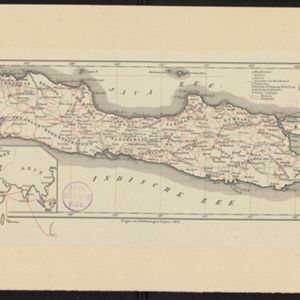Search Results
Filter
Insets
Legend
Remove constraint Insets: Legend
Language
Dutch
Remove constraint Language: Dutch
378 Results found

Nederlandsch Oost-Indië
1865
Brunei, Cambodia, East Timor, Indonesia, Laos, Malaysia, Myanmar, Vietnam, Thailand, Southeast Asia, Singapore, Philippines, Papua New Guinea
This detailed map of the Dutch East Indies in the mid-19th century contains a great deal of information: topographical details, settlements and administrative areas, roads, railways and maritime routes, telegraph lines, inset maps etc.

Kaart van Batavia omstreeks honderdvÿfentwintigjaren geleden overgebragt in het jaar 1864
1864
Indonesia
Although published in the mid-19th century, this map is based on Batavia (Jakarta) in c.1740. It focuses on the city’s castle and streets (in red), but also shows the fields of crops and the wetlands surrounding the city (in blue).
- Filter from 1670 to 1900
- Port67
- Railway Station44
- Pier27
- River311
- Road258
- Path172
- Railway/Tramway104
- Postal Route96
- Bridge49
- Canal43
- Telegraph/Telephone31




















